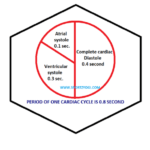TYPES OF MUSCLE CONTRACTIONS
TYPES OF MUSCLE CONTRACTIONS- A muscle contraction occurs whenever muscle fibers generate tension in themselves, a situation that may exist when the muscle actually shortening, remaining the same length, or lengthening. Skeletal muscles work on JOINTS to make movements possible. The only exception is with some muscles of the face which are not attached to a joint. The job of the muscle is to contract, and this contraction produces a FORCE which we called types of muscle contraction. For every muscle, there is an optimum length at which the force generated is maximum. This is called the force-length relationship. The FORCE is also dependent on the velocity of contraction, the force-velocity relationship.
Or we can say
When tension developed in the muscles is called muscle contraction
The tension in the muscle fibers is through actin and myosin cross-bridge cycling, in which the tension causes the muscles to lengthen, shorten, or remain the same. Usually, contraction means shortening in size, but when we talk about the muscular system, it means tension in the muscle fibers. There are various types of contraction in muscles so the muscle contraction is divided into three types according to how it contracts whether it’s shortening, lengthening, or remain the same.
In this process the types of muscle contractions and force generation may be in three types:
- Isometric Contraction (Static Action)
- Isotonic Contraction (Dynamic Action)
- Isokinetic Contraction
ISOMETRIC CONTRACTION
In Isometric contraction ‘ISO’ means “SAME” and ‘METRIC’ means “DISTANCE”, in isometric contraction the length of the muscle does not change. Tension develops but there is no change in the length of the muscle, If there is an external resistance that is more than the generated force, despite the contraction, the length of the muscles will remain constant this is called static contraction or isometric contraction.
The muscle remains in partial or complete contraction without changing its length. there are two different conditions:-
- Antagonist muscle contracts with equal strength.
- contraction against another force such as the pull of gravity or an external mechanical or muscular force.
EXAMPLE-
- Holding a book with an outstretched arm.
- A tug of war between two equal opponents.
- Attempts to move an object that is too heavy to move.
Despite energy expenditure, muscle length does not change and work can’t be done because no displacement occurs. Plank exercise or gymnastic irons cross are forms of isometric contraction. Like pushing a heavy immovable object[example- wall] when an individual pulls against a bar attached to the wall of the building, the muscle tension increases, but the walls do not move, and therefore the body parts that apply do not move[arms].


WHAT IS ISOMETRIC EXERCISE- These exercises are static muscle exercises. In isometric exercise, your muscle will tense and firing but static. This delivers no impact but highly effective exercise that’s the reason isometric exercise is often used for rehabilitation.
This is particularly typical of muscles found in arms and forearms because they do not change the length of the muscles, nor do the JOINTS move, so there is enough force to hold them.
ISOTONIC CONTRACTION
In ISOTONIC contraction ‘ISO’ means “SAME” and ‘TONIC’ means “CHANGE IN LENGTH”, in isometric contraction the length of the muscle changes. Isotonic contraction leads to a change in muscle length, Because of the displacement that occurs some work is done.
Isotonic has two types of muscle contractions are as follows:-
- CONCENTRIC MUSCLE CONTRACTION
- ECCENTRIC MUSCLE CONTRACTION
Concentric muscle action
IN concentric, the muscle shortens in length while developing tension. The energy produced can overcome external resistance, so the muscle shortens in size, and joints move. In this way the energy expenditure within the muscle leads to displacement, that is, work is done. Whenever in an exercise the body or part of the body moves the muscle action is in the form of concentric. Examples: – Biceps curl in upward phase, Upward phase of abdominal crunch.
Or in another word this contraction occurs when the tension generated by the muscle is sufficient to overcome the resistance


Eccentric contraction action
In eccentric[away from the middle] contraction, muscles lengthen while under tension. The external resistance is greater than the muscle force and acts in an opposite direction so that the muscle length increases. Eccentric contraction may be voluntary [smoothing out of muscle movement] and involuntary [when your muscles try to lift too heavy weight]. It is mostly seen that injuries occur in the eccentric phase.
Example- This happens in your biceps when you are lowering a dumbbell during a curl, downward phase of lunges.


Therefore, the difference between concentric and eccentric muscle actions is that, while both are isotonic forms, in the former the muscle actively shortens while in the latter the muscle actively lengthens. It is noteworthy that eccentric contraction is different from stretching exercises, like when you bent over to touch your toes and stretch the hamstrings. Stretching is a form of passive lengthening of the muscle while in eccentric action there is active muscle contraction.
ISO KINETIC CONTRACTION
In ISO KINETIC, ‘ISO’ means “SAME” and ‘KINETIC’ means “MOTION”. It is firstly introduced by J.J. PERRINE in 1968. In isokinetic contraction the tension arises by the muscle while shortening at constant SPEED is maximal over the full ROM [range of motion]. Force is developing while the muscle is contracting at a constant resistance. In isokinetic contraction, STRENGTH [tension] and speed of contraction are involved. Iso kinetic type of exercise can be done only by biodex which can provide maximal resistance at a present constant speed.
ISO KINETIC exercise is a combination of isotonic and isometric exercises which are done by using some specific design machines.


Example- Arms stroke during freestyle swimming, running, climbing or boxing shadow practice, etc.





